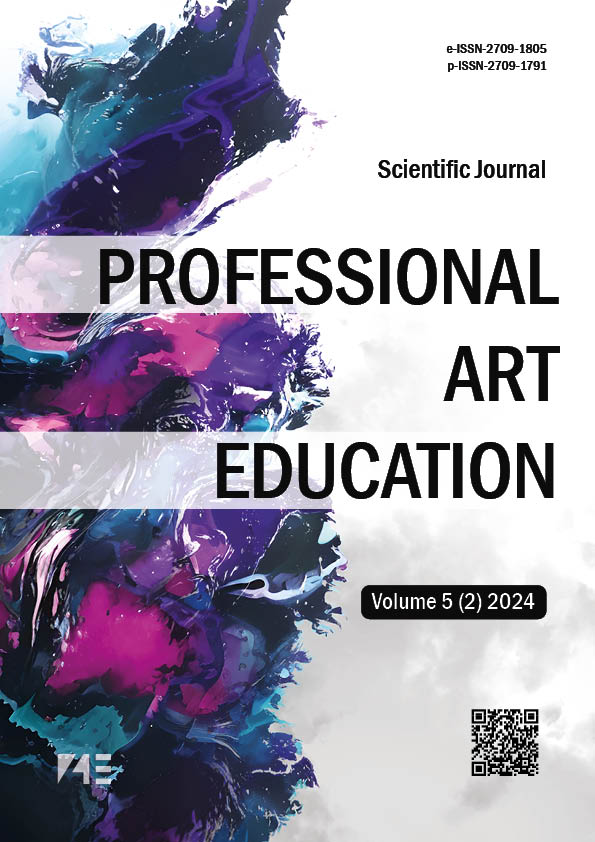The education role of hieroglyph in preserving cultural values of homeland in diaspora: a case study of the Chinese diaspora in Singapore
DOI:
https://doi.org/10.34142/27091805.2024.5.02.04Keywords:
PR China, Singapore, Chinese culture, Chinese character, hieroglyph, diasporaAbstract
Summary: This article explores the educational role of Chinese hieroglyphs in preserving cultural values of the homeland within the diaspora, focusing on the Chinese community in Singapore. The study examines how hieroglyphic writing serves as a cultural bridge, maintaining the identity and heritage of the Chinese diaspora while fostering a connection to their motherland. The aim of the research is to investigate how the use of hieroglyphs in everyday life contributes to cultural continuity among diaspora communities. Practical tasks include analysing the role of the Chinese in Singapore, exploring the role and balance between the Chinese characters and the official language in Singapore and find the ways it saves the Chinese culture and forms locality to Chinese state initiatives now. The research employs qualitative methods, including case studies and content analysis, to assess the effectiveness of hieroglyphs as cultural preservers. Results indicate that the use of hieroglyphs in community practices strengthens cultural retention and identity within the diaspora.
Downloads
References
Barr, M. (2019). Chinese ethno-nationalism in Singapore: Demography, culture and power. Asia Dialogue. https://surl.li/hyddyb [in English]
Cai, Y. & Huang, J. (2022). Ethnic history and national memory: The historical connection between Chinese Singaporeans and China from the perspective of the Wanqingyuan Memorial Hall. Overseas Chinese History Research. https://surl.li/dmmknn [in Chinese]
Cao, W. (2024). Chinese Characters and Cultural Inheritance: Exploring the Important Role of Chinese Characters in the Inheritance of Chinese Culture. Cultura. International Journal of Philosophy of Culture and Axiology. 21(1). 345-355. https://surl.li/efzhgz [in English]
Gong, D. (2013). Chinese immigrants in Singapore: role positioning and social contribution. Contemporary World Socialist Issues. 1(115). 94-102. https://core.ac.uk/download/pdf/41451021.pdf [in Chinese]
Harper, M. (2019). Shaping philanthropy for Chinese diaspora in Singapore and beyond: family, ancestry, identity, social norms. A thesis submitted for the Degree of Doctor of Philosophy. Indiana University. https://surl.li/qgwwha [in English]
He, P. (2022). Chinese character culture communication and comparative analysis based on big data visualisation. Wireless Communications and Mobile Computing. 35. https://doi.org/10.1155/2022/6371538 [in English]
Hirschmann R. (2024). Resident population in Singapore 2023, by ethnic group. Official site of Statista https://surl.li/vqmisx [in English]
Kalashnyk, L. (2020). The use of hieroglyphs as a means of civic education in the People’s Republic of China. Bulletin of the Chernihiv Collegium National University named after T.G. Shevchenko, 7(163), 188–192. https://surl.li/zhfstc [in Ukrainian]
Kalashnyk, L., Ruda, N., Oserska, O., & Nazarenko, O. (2024). “Schools for Ladies and Gentlemen” as a specific form of non-formal educational educational institutions in Far East countries (China, Japan, South Korea and Singapore). SOCIETY. INTEGRATION. EDUCATION. Proceedings of the International Scientific Conference, 1, 665-674. https://doi.org/10.17770/sie2024vol1.7812 [in English]
Ke, M. (2019). A General History of the Chinese in Singapore. Academic and Popular Literature. 826. https://doi.org/10.1142/g456 [in Chinese]
Liu, C. (2020). Chinese characters are the cultural bond that builds a strong sense of community for the Chinese nation. Guangming Daily. http://www.xinhuanet.com/politics/2020-09/25/c_1126539178.htm [in Chinese]
Liu, H. (2021). The new Chinese diaspora in a globalising Singapore. Melbourne Asia Review, 8. https://doi.org/10.37839/MAR2652-550X8.11 [in English]
Liu, H. (2021). The evolution of contemporary Chinese society in Singapore and its dynamics and characteristics: from the perspective of new political economy. Overseas Chinese History Studies. 4. https://surl.li/majtys [in Chinese]
Lynn, A. (2001). A question of «Chineseness»: the Chinese diaspora in Singapore 1819-1950s. A thesis submitted for the Degree of Doctor of Philosophy. University of Stirling. https://core.ac.uk/download/pdf/9047742.pdf [in English]
Wang, Y., & Quan, G. (2020). Chinese characters are the great cornerstone of the Chinese nation’s cultural confidence. Journal of Cultural Heritage and Creative Industries Research Institute. https://surl.li/dhhqoz [in Chinese]
Xu, L., & Sun, Zh. (2020). Exploration and Practice of Integrating Chinese Character Teaching in Primary and Secondary Schools into Excellent Traditional Chinese Culture. Conference on Education, Language and Inter-cultural Communication 2020 (ELIC 2020). https://doi.org/10.2991/assehr.k.201127.107 [in English]
Xu, Yi. (2019). The development of Chinese characters and the unification of China. Guangming Daily. https://surl.li/amywss [in Chinese]
Zhou, M., & Liu, H. (2012). Changing Patterns of Chinese Immigration and Diaspora-Homeland Interactions in Singapore and the United States. Official site of UCLA International Institute. https://escholarship.org/uc/item/7051501n [in English]
Published
License
Copyright (c) 2024 Любов Калашник (Автор)

This work is licensed under a Creative Commons Attribution-NonCommercial 4.0 International License.














